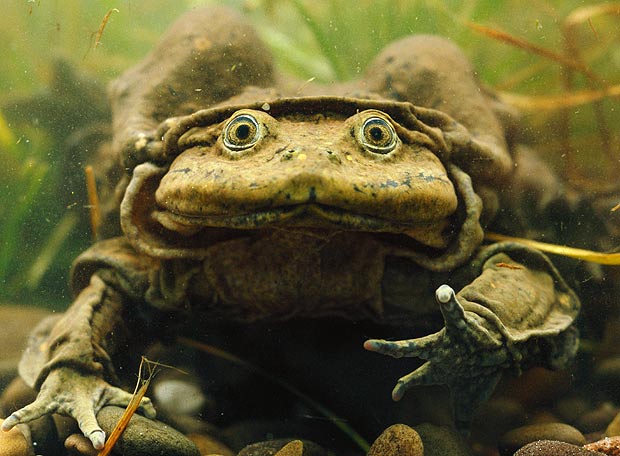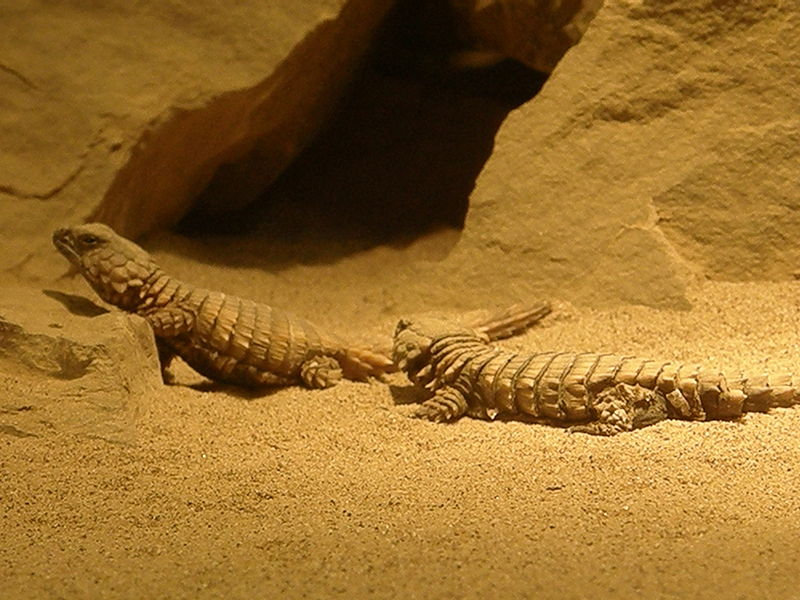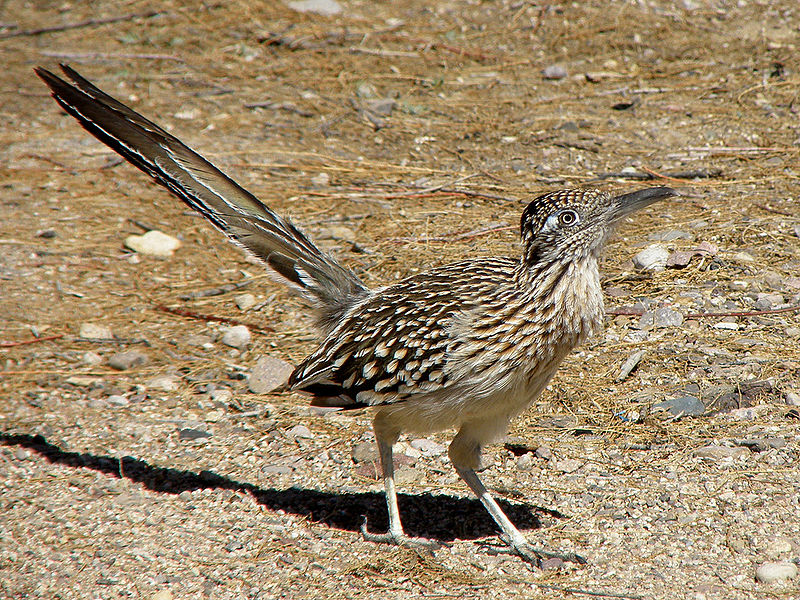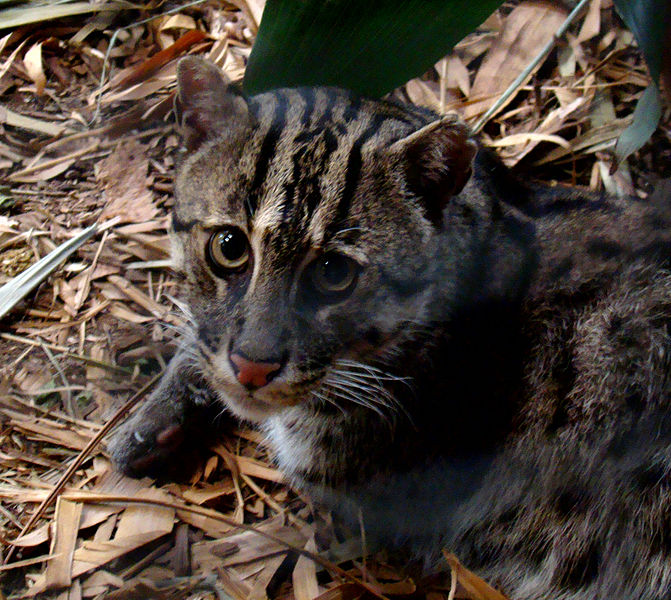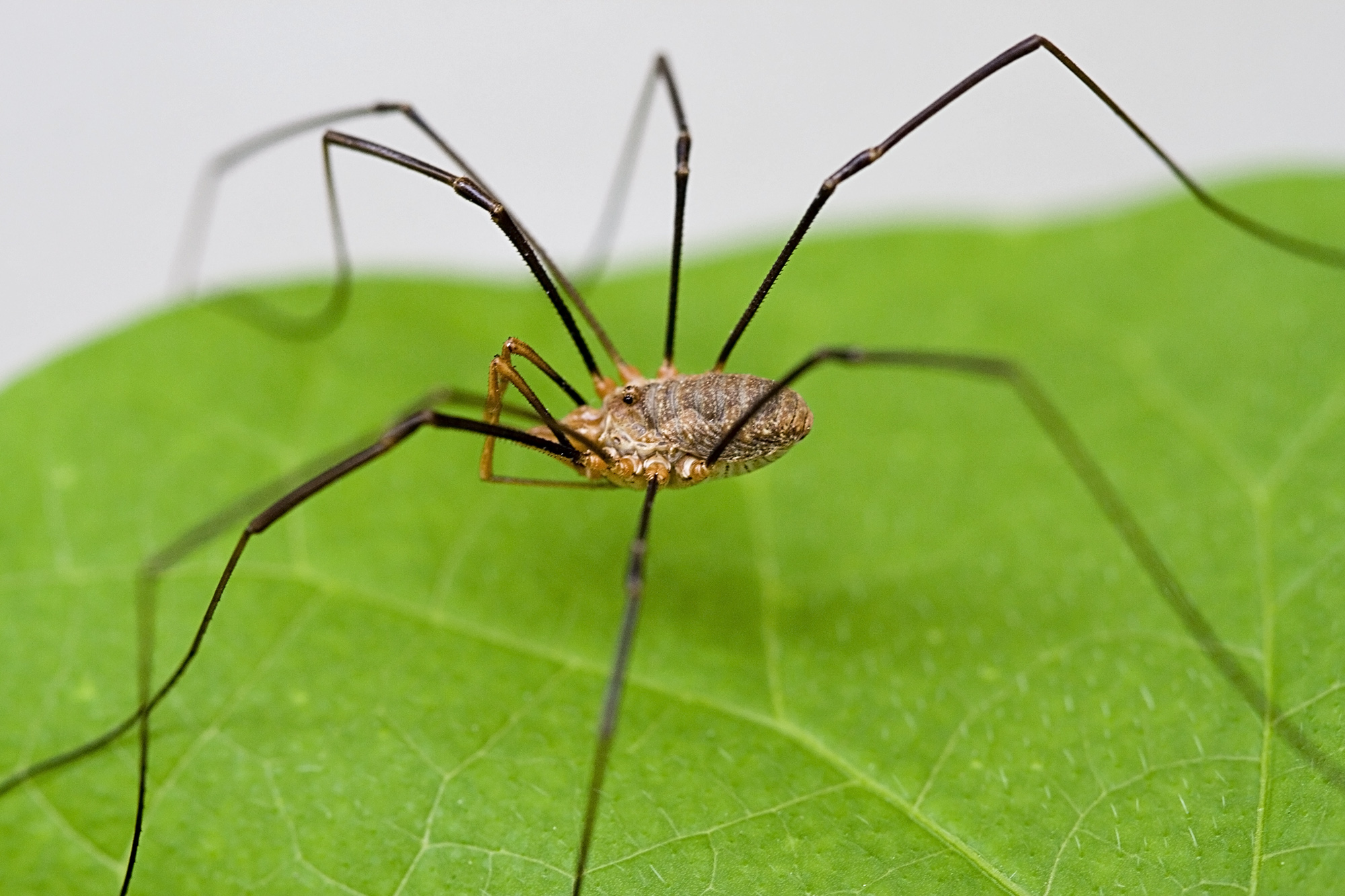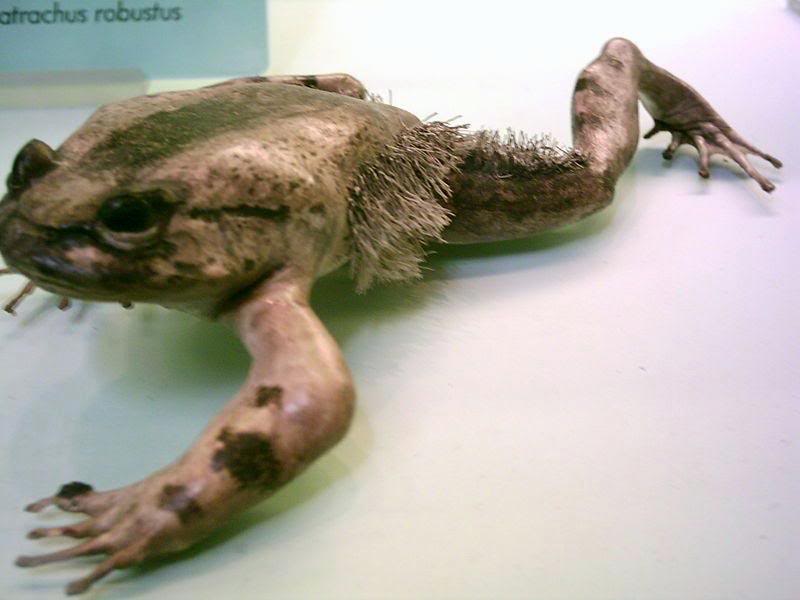The next animal lucky enough to make it into the Top 10 Wild Facts is the Lake Titicaca Water Frog (yes, I know “Lake Titicaca” is incredibly fun to say). This large frog species is very unique and as such quite deserving of the #9 spot. Let’s find out a little more about them, shall we?
Cool Facts about the Lake Titicaca Water Frog
- This amazing amphibian is the largest frog that lives exclusively under water, with individuals weighing up to 1 kg (2.2 lb.) and measuring up to 50 cm (19.7 inches)
- The Lake Titicaca Water Frog is easily recognized by its excessive amount of skin, an adaptation for underwater living that helps the frog remain underwater without needing to surface for air…ever.
- It was first observed by a team of explorers led by famous Jacques Cousteau in the early 1970s; he reported that the bottom of the Lake Titicaca was populated with ‘thousands of millions’ of giant frogs
- Sadly, the Lake Titicaca Water Frog is critically endangered due to over-collecting for human consumption, predation of tadpoles and pollution
The Frog with Excessive Amount of Skin
The most interesting physical feature of this water frog is clearly the excessive skin that hangs around everywhere. Having an olive green, dark green or black colored back, this frog has an appearance only a mother could love, at least this is what some say. Still, the excessive skin is a very unique adaptation to its environment, namely Lake Titicaca waters.
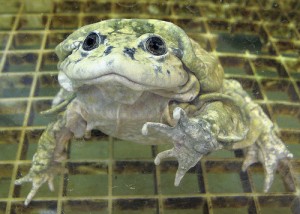 Due to the fact that we’re talking about the highest navigable lake in the world, located at 3,812 m altitude (12,507 ft.) an oxygen-saturated lake, the Lake Titicaca water frog has come up with a unique way to breathe underwater. As alluded to earlier, it basically uses their huge amount of skin to breathe, while their lungs are greatly reduced.
Due to the fact that we’re talking about the highest navigable lake in the world, located at 3,812 m altitude (12,507 ft.) an oxygen-saturated lake, the Lake Titicaca water frog has come up with a unique way to breathe underwater. As alluded to earlier, it basically uses their huge amount of skin to breathe, while their lungs are greatly reduced.
How in the world does a frog use their skin to breathe?
Believe it or not, the oxygen gets diffused into the blood when the frog performs a specific motion that helps water to pass over its skin folds. Intelligent creature indeed! This amazing frog loves to hang around in the shallow lake waters, where it shelters at a temperature of 10 degrees Celsius. It is a great swimmer as well, using its long hind limbs to propel itself through the water, while the excessive skin on its back acts like a pair of underwater wings.
An Endangered Giant
As with many endemic species, this beautiful creature is critically endangered, and its population is decreasing with each passing year. The biggest threats that are endangering this unique species are human consumption as well as the pollution of the lake. Unfortunately the threats to the Lake Titicaca Water Frog don’t end there as the introduction of invasive species, mainly a species of trout, are wrecking havoc on the frog’s larvae the invasive species that feed on the frog s larvae.
Similarly, domestic and agricultural residue have polluted the lake in the past decades acting as a hindrance to Lake Titicaca’s water frog breeding. Being attacked and threatened by so many different agents, this unique frog may become another extinct species. Fortunately, there are many captive breeding programmes as well as governmental legislation that fight to keep the species alive and protected for the years to come.
Wild Fact Flashback: Wild Fact #991 – When Nature Calls

